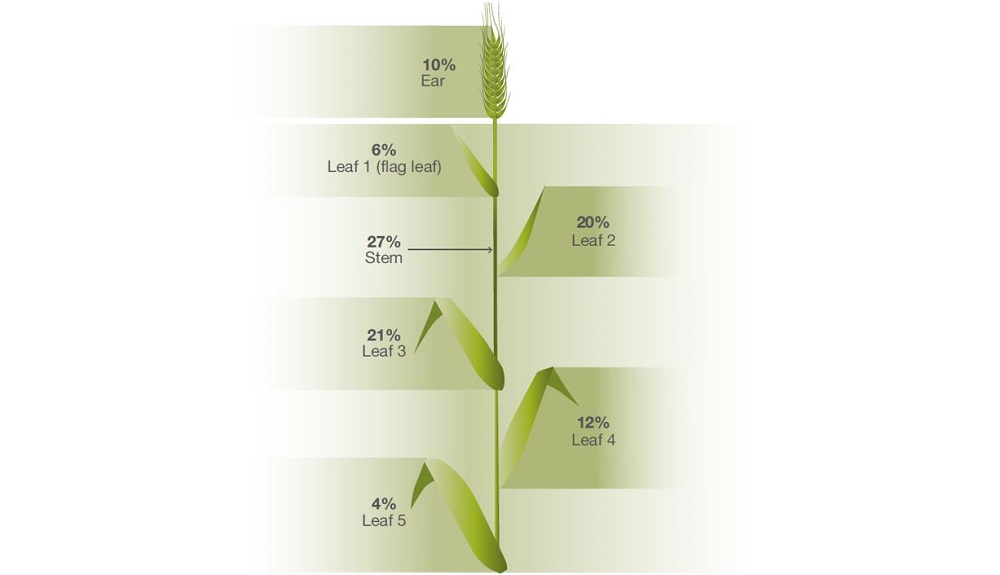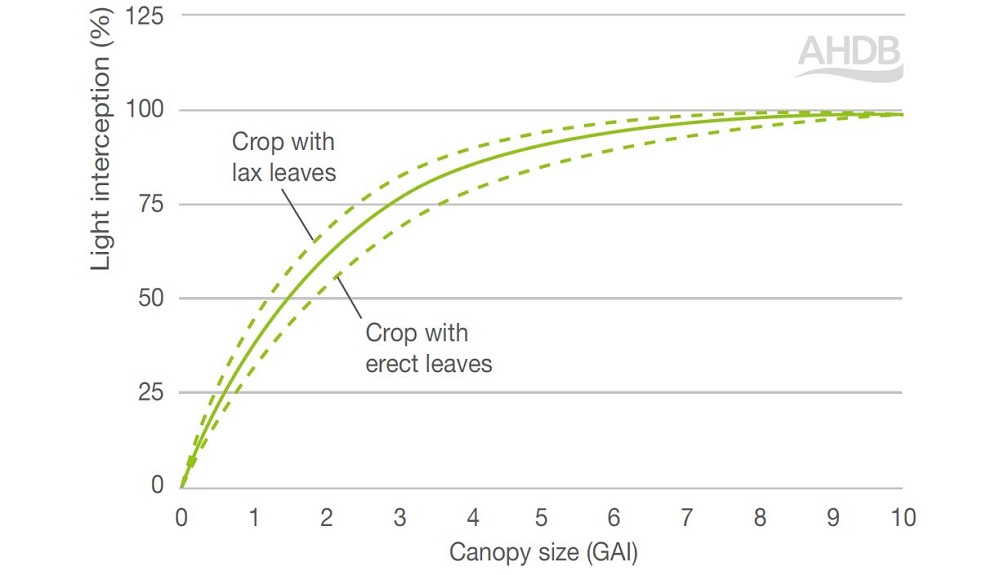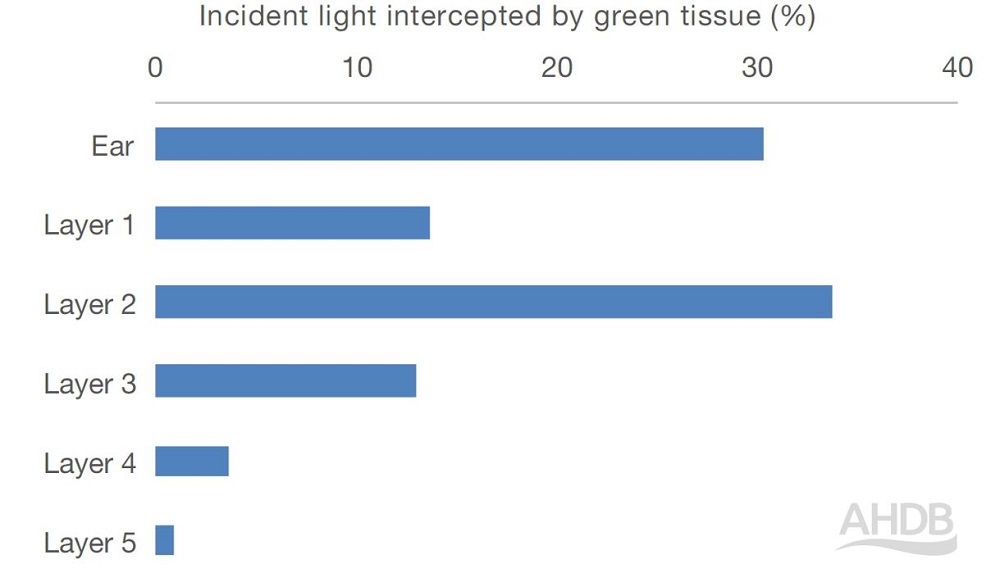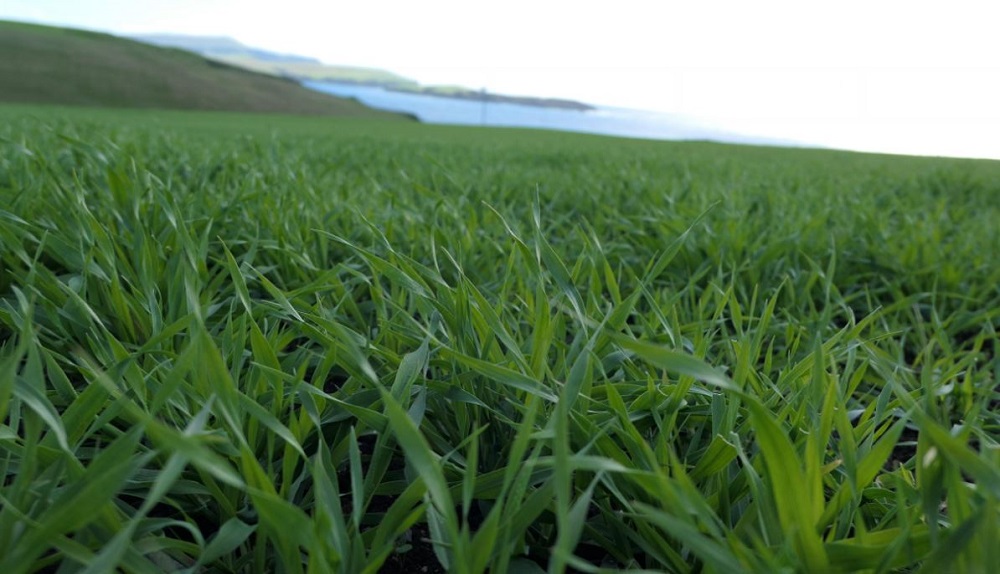- Home
- Knowledge library
- Management of canopy expansion and senescence in barley
Management of canopy expansion and senescence in barley
Canopy size determines the proportion of sunlight intercepted, which drives the accumulation of dry matter. Learn how to manage canopy growth and lifespan to help maximise barley yields.
Growth guides for wheat, barley and oilseed rape
Canopy size and light interception
- The crop canopy comprises all green surfaces – mainly leaf blades, but also stems, ears and awns
- Canopy size is determined by shoot numbers and leaf emergence/expansion
- Canopy size determines the proportion of sunlight intercepted and subsequent dry matter increase
- Unlike wheat, the flag leaf of barley is small and intercepts relatively little light
- Most of the light is intercepted by the ear and leaf layer 2 (leaf 2 and the stem immediately above it)
- Canopy growth and lifespan is responsive to crop management
 AHDB
AHDB
The illustration above shows the distribution of green area in winter barley.
How to measure growth area index (GAI) in cereals
The crop’s green area index (GAI) is the ratio of green leaf and stem area to the area of ground on which the crop is growing. Use measurements of GAI during the growing season, alongside targets, to guide canopy management.
How to measure growth area index (GAI) in cereals
 in winter barley during the season.JPG) AHDB
AHDB
Early canopy expansion (slow)
Benchmark: GAI = 1.4 by GS30 (2 April)
Varietal influence: Medium
Other influences: Temperature
Leaves and tillers emerge through the autumn and winter. At this time, the crop is small and there is relatively little light to intercept. Cooler temperatures and low light levels will slow leaf emergence, tillering and growth during this period.
Later canopy expansion (rapid)
Benchmark: Canopy closure (GAI 3) = 21 April
Benchmark: Peak GAI at GS59 = 5.8
Varietal influence: Medium
Other influences: Temperature
From GS30, canopy expansion accelerates as tillering continues and leaf emergence increases with rising spring temperatures. Canopy expansion continues until shortly after ear emergence.
Between GS30 and ear emergence (GS59), crop growth equates to an average of one unit of GAI every 12 days. Growth is most rapid from GS30 to GS39, when GAI increases by one unit every week. Canopy closure occurs when the ground is completely shaded by leaves – GAI 3 (typically, 5 days after GS31).
As the canopy becomes thicker, each increase in GAI contributes less additional intercepted light energy, until full light capture is achieved. For example, an increase from GAI 2 to GAI 3 captures 15% more light, whereas an increase from GAI 6 to GAI 7 only captures 2% more light.
 AHDB
AHDB
Spring barley
Canopy expansion tends to be more rapid in spring barley and peak GAI is often around 10–15% less than winter barley (i.e. GAI around 5 at GS59). However, canopy size is highly dependent on crop management.
 AHDB
AHDB
Canopy senescence
Benchmark: GAI = <0.5 by 5 July
Varietal influence: Medium
Other influences: N supply, temperature, rainfall
Loss of canopy green area begins soon after ear emergence as lower leaves progressively die. GAI falls from 3 to less than 1 in just 10 days.
Barley canopy management
- Ensure crops have adequate N to achieve benchmark canopy size at GS59 (GAI 5.8)
- Maintain adequate levels of soil K
- Protect early canopy against disease (T1 timing is more important in barley compared with wheat)
- Consider options to increase shoot number and canopy size (e.g. sow earlier, use higher seed rates and apply spring N earlier)

Topics:
Sectors:
Tags:

